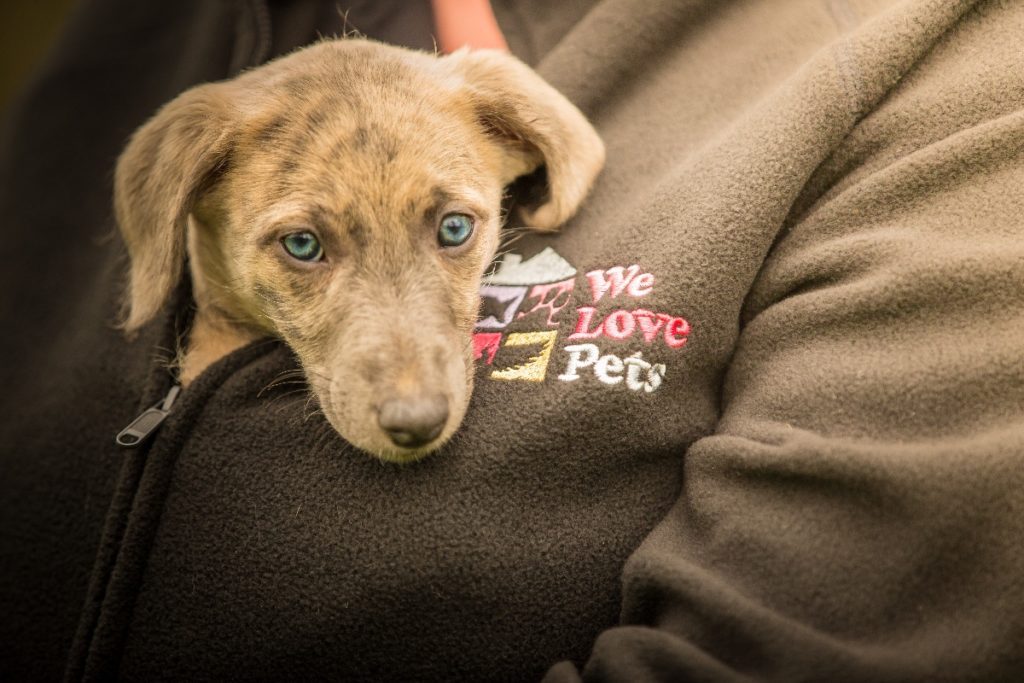When deciding if your dog would benefit from a winter coat to protect it against the elements there are a few things to consider. The breed of dog, type of coat, dog’s age and how active it is. Many breeds we have as our family pets are not native to the UK, the Chihuahua, for example, is from the hotter climes of Mexico or the Siberian Husky from the colder climes of Siberia and with that comes different types of fur.
In milder winters most dogs will not need a coat but sometimes a waterproof coat may be beneficial. In the winter months if the temperature does not fall below zero most breeds will be ok. However, watch your dog and how it handles the prospect of going outside – does it start shivering at the thought of it?
Certainly, our senior citizens and very young pups may not be able to regulate their body temperature as well as a healthy adult dog. A dog suffering from a metabolic disease process such as Cushings Disease, Diabetes or Hypothyroidism may have thinning skin and alopecia.
The more solid, well-muscled dogs are less likely to get cold such as the Rhodesian Ridgeback than finely built breed dogs like Italian Greyhounds. Breeds like a Staffordshire Bull Terrier may be borderline as although a stocky, well muscled breed they also have a fine short coat. For this breed, age may come more into play as the elderly dog may benefit from the extra layer of a coat.
The type of fur a dog has will also make a difference. A little Pomeranian will cope better in colder weather compared to a smooth coated Dachshund although they are both small breeds. Short single-layered coated dogs may need extra protection. Double coated breeds like a German Shepherd are unlikely to need a coat. If your dog has a long coat and a thin fine coat (Yorkshire Terrier) this type of coat will not offer much protection.
Waterproof coats tend to be better than knitted jumpers. There are some good brands out on the market that will draw any wetness away from your dogs skin to help prevent your dog from getting a chill. Some brands have originated from the equine sector and were introduced to keep horses warm and dry post exercise.
When buying a coat make sure it fits well and does not cause any rubbing. If it looks like your dog is getting hot when running around – take the coat off! Only put the coat on when you are literally heading out and take it off as soon as you get home. One other thing to consider is if your dog is wearing a coat it will be to some extent difficult for other dogs to read its body language because the coat will be covering up the body.
Generally, if you are putting your dog in a coat it is advisable to make sure there is a good reason for it to be wearing one. You don’t want to humanise your dog and dress it up in the colder weather if it really offers no benefit.




